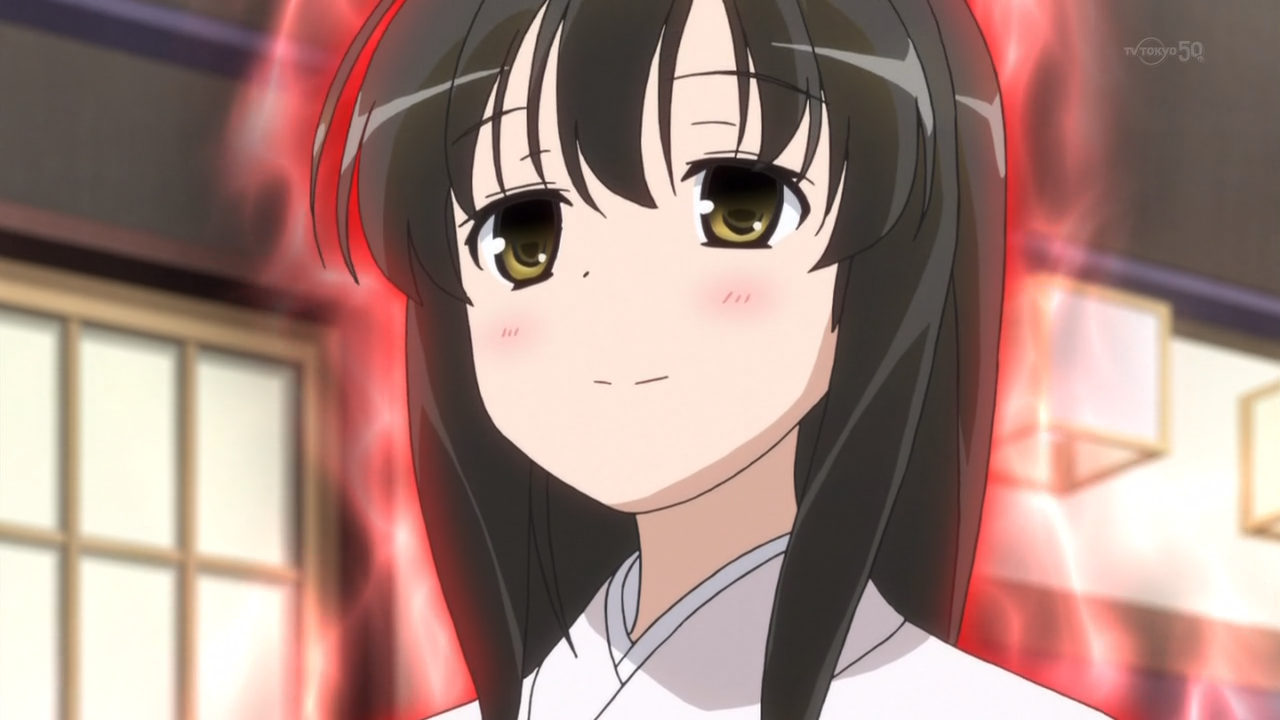
This Kasumi is not as epic as the Kasumi from Dead or Alive.
This week required some Chinese knowledge, that I don’t have! But xUnknownOrchestra does.
In specific it’s about a mahjong hand in chinese mahjong, Hisa calls it chanchuuren, this is a hand that is full open, meaning that all sets the player made are from stolen tiles.
The kanji are 全求人 and the literal translation is “All begged from people” or “All asked from people”
全: All
求: Request
人: Person
This is a yaku in chinese mahjong, not riichi mahjong, which is played in this show.
Saki also wins with a Rinshan Kaihou (Tsumo after kan) from a stolen tile, which by this tournament’s rules requires the one that the tile was stolen from to payout everything. Some rules count this as a tsumo and everyone has to pay.
720p: [Doki] Saki Zenkoku-hen - 09 (1280x720 Hi10P AAC) [D785B770].mkv
480p: [Doki] Saki Zenkoku-hen - 09 (848x480 h264 AAC) [EE7B0336].mkv



Interesting Mahjong info there. Anyway thankyou for this 🙂
Thanks!
Just to correct you on this:
“全求人” (or “全求” for short) is in fact part of the set of THREE winning ways to game your hand, although literally translated as “All asked from people”, BUT it’s actual meaning is in fact “Gaming your hand with all discarded tiles”, meaning that you complete your hand fully open (full of “PON(ポン)” or “CHI(チー)” groups only) with ONE remaining hidden tile left to complete your hand (usually known as “listen to 1 tile” or “独听”, completing your hand using a matching tile discarded from the opponent player, in this instance usually the one who throws that “unlucky” tile that completes your hand will pay.
There are two other variations to this too:
“半求人” (or “半求” for short) works similarly to the above BUT with the last matching tile under “独听” drawn instead of from an opponent’s hand, creating a complete hand via the “Tsumo(ツモ)” method, in this instance all opponents will pay. This variation translates to “Gaming your hand with ONE drawn tile upon building your hand on discarded tiles”.
“不求人” (or “不求” for short) means “Gaming your hand WITHOUT INVOLVING ANY discarded tiles”, literally a full complete hand hidden from view as it doesn’t have any “KAN(カン)”,”PON(ポン)” or “CHI(チー)” sets; but with the exception of “ANKAN(アンカン):4 of same tiles drawn in your hand” as it is still considered hidden part of your hand. Even the matching tile used to game your hand is drawn in this instance on top of not relying on any discarded tile to build your complete hand.
These moves are usually applicable in Taiwan 16-tile or Hong Kong 13-tile Mahjong games.
Hope this lesson from a 8-year experienced Mahjong player helps…
This post is giving me a headache….